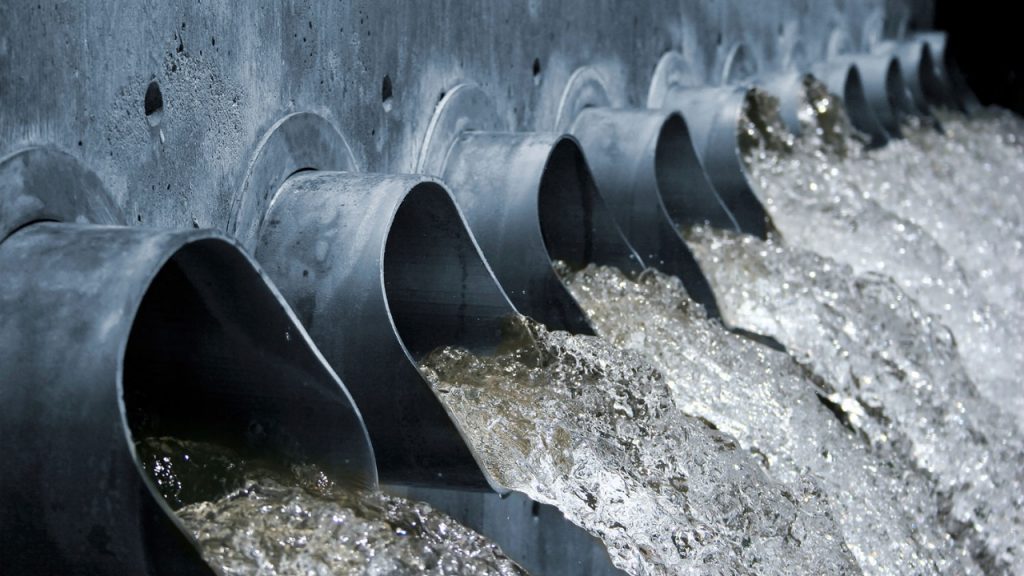Overview
In general, we construct wastewater treatment plants to prevent various types of pollutants from polluting the water environment. As a result, they must meet the required effluent standards. However, in practice, the results are frequently inconsistent with the design parameters expected from the project.
We can take several examples to demonstrate some common causes of malfunction. There may be issues with the sewage system, plant design, technical equipment, hydraulics, and, of course, maintenance due to the under training of personnel. Simple advancements in sewage and plant system technology, as well as adequate personal training, can frequently be used to solve wastewater treatment problems instead of costly reconstruction.
Moreover, water pollution is becoming a serious impediment to any society’s long-term development.
Water quality management is one of the most significant burdens on the weak economies of many transitions or developing countries.
Stormwater drainage, sewer reconstruction, sludge disposal, and also recipient section regulation are frequently much more complicated and costly too.
Problems:
The first issue is that Floc is too small:
Solutions
- We can also do jar testing to ensure proper chemical dosage.
- Examine your drawdown and metering for low chemical metering.
- Your chemical feed pump may be set too low. If necessary, increase the feed pump or drawdown rate.
- Examine your pH and control calibration, and make any necessary adjustments.
- In the flocculators, check the paddle speed. The speed could be too high, resulting in floc shear.
- Make sure you have a good injection point and adjust it if necessary.
The second issue is that Floc is too big:
Solution
- This problem is usually caused by incorrect chemical dosage. Moreover, Jar testing is an excellent way to double-check your dosage.
The third issue is that wastewater settles too quickly:
Solutions
- Examine your drawdown and metering for low chemical metering.
- Make sure you have enough dilution water.
- Inspect the injection points for polymer or coag. We should optimize them to maximize solid’s contact and reaction time.
Floating sludge is the fourth issue:
Solutions
- Your sludge collectors must be operational at all times. Examine the motors, chains, drive belts, and other components.
- Check the operation of your sludge pump. Do the pumps and pipes have debris in them? If necessary, use the standby pump.
- By conducting jar testing, you can look for changes in influent flow, pH, or chemistry.
- Are the polymer and coagulant concentrations correct? To test, run jar testing.
Solids loss over the effluent weir is problem number five:
Solutions
- We can also do jar testing to ensure proper chemical dosage.
- Examine your drawdown and metering for low chemical metering.
- Your chemical feed pump may also be set too low. If necessary, increase the feed pump or drawdown rate.
- Examine your pH and control calibration, and make any necessary adjustments.
- In the flocculators, check the paddle speed. The speed could be too high, resulting in floc shear.
- Check the alignment of your baffling inlet and outlet and also make any necessary adjustments.
The next problem is thin sludge or a thick sludge blanket:
Solutions
- Check that your cross-collectors are operational. Examine the motors, drives, and also the belts.
The sludge collector is jerky or does not function is number seven:
Solutions
- Examine the sprocket, chain link, flight, and also shear pin on the collector. These components should be repaired if they are damaged.
- If the sludge blanket is too thick, it may be necessary to pump it out. If necessary, we can do this by hand also.
Solids carryover with effluent is problem number eight, but a good sludge blanket can help.
Solution
- Your sludge blanket is probably too thick. Increase your flight speed or low flow rate to counteract this.
Problem nine is that the float is too thin, but the effluent is satisfactory:
Solution
- Reduce the flight speed or increase the flow rate.
Poor effluent quality and thin sludge are problems number ten.
Solutions
- The air/solids ratio could be too low. Increase the amount of air coming in.
- It is possible that the pressure is too high or too low. Recycle the valve by opening or closing it.
- Is the recycle pump turned on and operating correctly? Examine it for damage and functionality.
- The chemical addition may be insufficient. Chemical dosages can also be checked using jar testing.
- It is possible that the loading is excessive. If this is the case, reduce the flow rate.
Bottom Line
As you can see, it takes a significant amount of time to run a wastewater treatment plant efficiently and also in accordance with local discharge regulations. The problems and potential solutions identified above should give you a better understanding of how to correct them. But ultimately, choosing the right STP at the start of the process goes a long way toward ensuring the plant is easy to maintain and fit for purpose.
However, selecting the right wastewater treatment plant at the outset of the process goes a long way toward ensuring that the plant is simple to maintain and fit for its purpose. Please contact us now for more information on how to choose the best technology!
Do you find this article interesting? Then please check out the rest of the blogs too. We’re sure that you’ll find them fascinating and also valuable as well.


